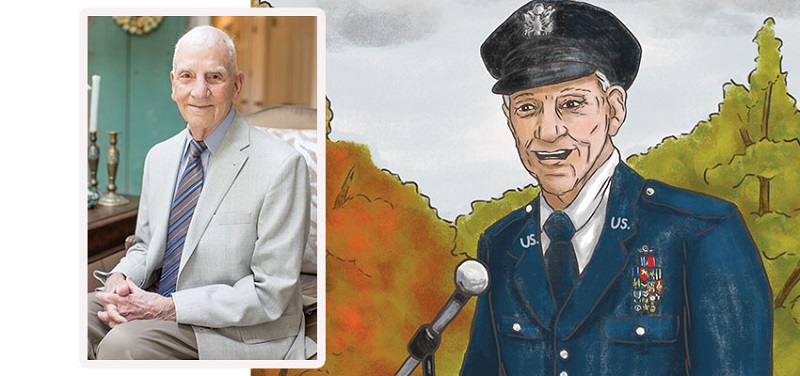SOTU is for Children, Too
Sign up for a six month free
trial of The Stand Magazine!
Last year, my husband and I purposefully turned the TV on to watch the State of the Union Address. Now, I must admit, we have not always been politically alert in our home, but as we witness this country, that our grandfathers and my husband fought for, become more divided and sinful every day, we sense the urgency to pay attention, pray, and educate ourselves and our children.
We told our young boys that we would allow them to stay awake and watch it with us, but as President Trump began to speak, they became filled with questions and opinions. I wrote about this experience last year in a blog called SOTU from a Child’s View.
Eventually, we asked them to be quiet because we couldn’t hear what was being said. Soon, two of them fell asleep and one entertained himself with Legos until he couldn’t hold his eyes open any longer.
As the speech ended and we carried everyone to bed, I began to feel very guilty about silencing their questions and not listening to their comments and concerns.
The next morning, as a part of our home school class we re-watched the SOTU and I was blown away by their interest and wisdom at such a young age. And to be honest, I was stumped by many of their questions which led us to research the answers.
In case you have inquisitive children watching with you or if you’re like me and have no recollection of important lessons from government classes, maybe this brief history lesson will be beneficial.
What is the State of the Union Address?
The SOTU is a custom in which the president gives updates about important issues facing Americans, the economy, national security, and other key points while laying out his legislative agenda for the upcoming year.
The president and first lady also invite and honor special guests with extraordinary achievements. These guests have different backgrounds and experiences but represent the very best of America.
Why is it called a ‘State of the Union’ Address?
Originally, President George Washington named this particular speech the “Annual Message.” Then in 1942, President Franklin D. Roosevelt informally changed the name to the “State of the Union.” The American people favored this title and it was officially changed in 1947.
How often do presidents deliver a State of the Union Address?
Article II, Section 3 of the United States Constitution states that the president shall ''from time to time give to the Congress information of the state of the union, and recommend to their consideration such measures as he shall judge necessary and expedient.''
Even though it says “from time to time,” President Washington set the precedent in 1790 for an annual address, although there have been exceptions. Normally, the address is given in January or February; however, prior to 1934, it was given in December.
Who will be in attendance?
On the night of the SOTU, all three branches of the federal government will come together as one. Members of the House of Representatives and the Senate will gather together in the chamber of the House of Representatives at the U.S. Capitol. The speaker of the house and the vice president, who is also the president of the Senate, will sit on a raised platform directly behind the president.
Military officials, Supreme Court justices, and Cabinet members will sit at the very front on the floor level. The senators and representatives of the Democratic Party will be seated behind them on the president’s right. Across the aisle, the senators and representatives of the Republican Party will be seated to the president’s left.
The first lady and guests will be seated on the upper level.
Who will not be in attendance?
Although our nation’s entire government will be sitting in one room during the SOTU, there will inevitably be a few members strategically missing. At least one member of the president’s cabinet and two members from each house of Congress from each party will be placed in a secure location away from the Capitol.
This is a safety measure to ensure there are senior members of the government able to take charge in the event of a targeted catastrophic attack.
These chosen officials are referred to as “designated survivors.” The first designated survivor was during the Cold War in the 1960s amid fears of a nuclear attack. The role of the designated survivors was taken much more seriously after 9/11.
Interesting Facts:
- William Henry Harrison and James Garfield are the only presidents who did not give a State of the Union Address. Garfield only served in the White House for six months before he was assassinated. Harrison died of pneumonia after only serving for one month as president.
- From Thomas Jefferson’s presidency through William Howard Taft’s (1801-1913), the State of the Union was delivered in written form.
- In his first term, Woodrow Wilson brought back the tradition of delivering a speech in person.
- Jimmy Carter preferred to give his speech in written form.
- Calvin Coolidge gave the first radio broadcast of his address in 1923.
- Harry S. Truman delivered the first televised address in 1947.
- Lyndon B. Johnson’s address was the first on primetime television.
- George W. Bush is the first president to have his address broadcast live on the internet.
- Franklin D. Roosevelt gave the most addresses (10 were given in person/2 were written).
- In Ronald Reagan’s 1983 address, he introduced the phrase, “The State of the Union is strong.” With slight variations, it has been customary for the phrase to be repeated by every president nearly every year, except for George H. W. Bush.
How has SOTU changed?
Initially, the Annual Message began as a means of communication between the president and Congress. The American people did not truly begin to pay attention to these words from the commander in chief until it began to be televised.
Families would stop what they were doing to gather around and listen, regardless of the president’s political party or views. Most especially after WWII, the American people valued what the president had to say and felt a strong sense of patriotism. Parents at that time taught their children to honor and respect the president since he was the highest authority in our land.
With the use of live broadcasts on television and the internet today, we have no excuse for missing this event. But sadly, with hundreds of other channels, busy schedules, social media, and disregard for the issues facing our country, so many families will turn a blind eye to what our leader has to say.
***
Whether you agree with President Trump or not, this is a historical, learning experience we should make time for. I know from experience, parents will be in awe of how much their children actually do pay attention to the key people, the approval and disapproval amongst parties, the facial expressions, the important issues, and the memorable special guests. Their questions will be endless…and that’s a good thing!
The 2020 State of the Union will be broadcast on Fox News Channel as well as local Fox affiliates on February 4. It is scheduled to start at 9 p.m. ET.
Let the kids stay up late and make this a fun family night! Show your children that you love this country and care about its issues. Regardless of political party division, our nation is still one great nation under God!
Let us all pray that the “State of the Union will remain strong.”

Sign up for a free six-month trial of
The Stand Magazine!
Sign up for free to receive notable blogs delivered to your email weekly.


















